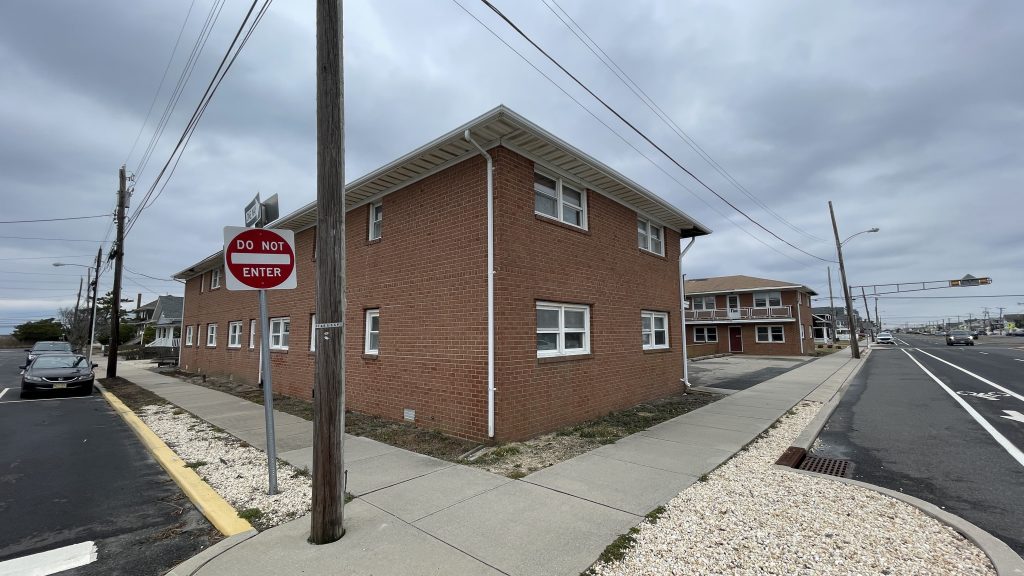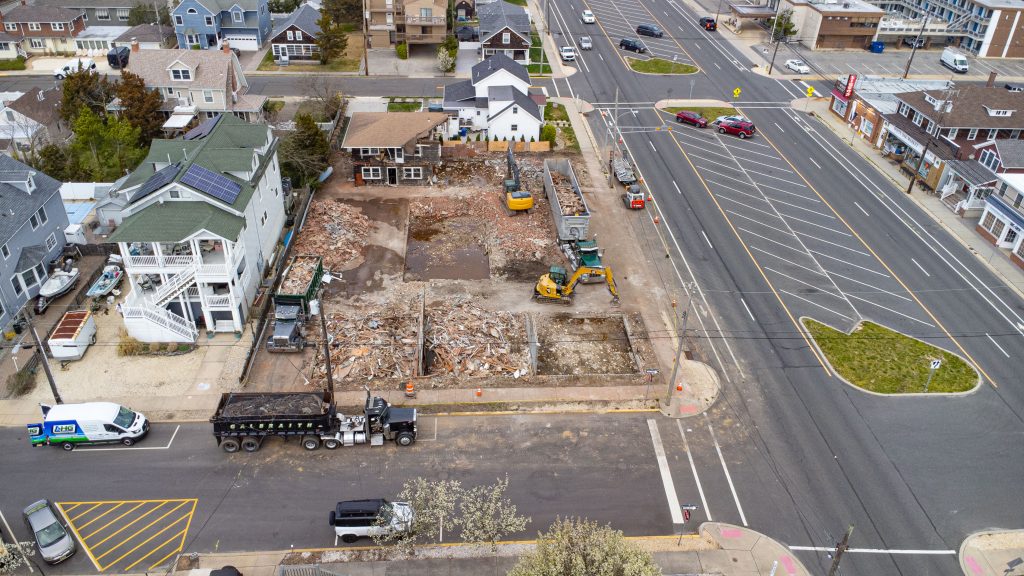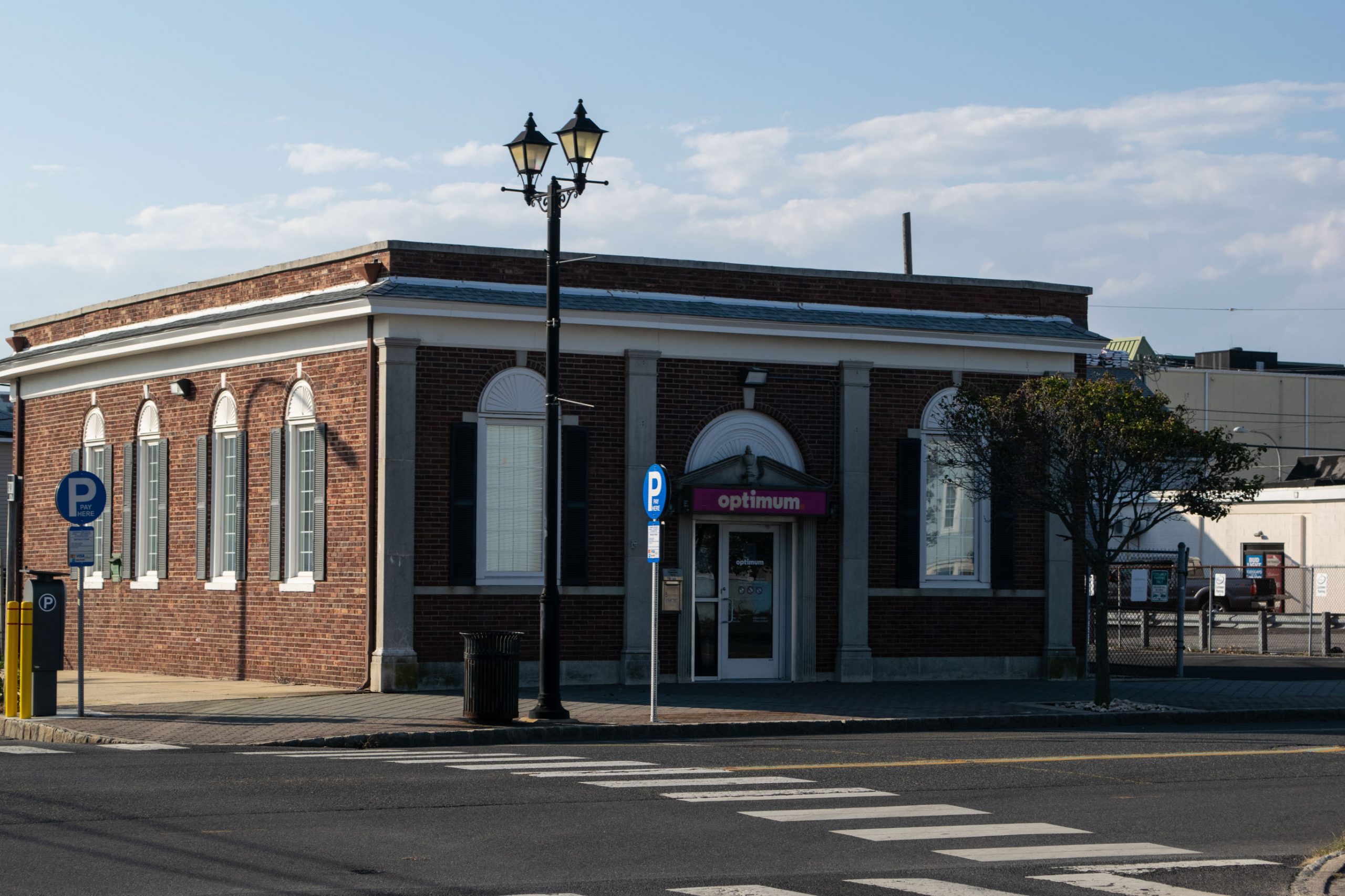A debate lingers on in Seaside Park about the appropriate usage of the former Park Central site on Central Avenue, an apartment building that was acquired by the borough after falling into disrepair.
The building was demolished last year, and ever since, officials and residents have been putting forward ideas about what should go there. The ideas have ranged from a seasonal outdoor market, to bocce ball courts, to pickleball courts, but many options come with a significant cost in terms of materials and labor to construct. An idea that caught on quickly, the seasonal market, even elicited an offer from an architect from town to design the area pro-bono.
“We had the services of a local architect who had a plan based on input from the public, and that plan … they had worked with soliciting a proposal from a contractor,” explained Mayor John Peterson. “The proposal came in considerably higher, so as such, as the council needs to look over some various options.”
Last year, resident Brian Tracy, an architect with a firm in Philadelphia who is also a member of the borough’s Environmental Committee, volunteered to draw up plans for to create the unique space which would feature a gazebo, pop-up shops and open space where people could relax during the day. The park could also host events, he said at the time.
Council members, led by Councilman Marty Wilk, who is shepherding the future of the site, generally agreed that a phase-in of the marketplace idea may be the best use of the site for now, with a bocce court being best suited for the former Boy Scout building on J Street that is being converted into a community center. Park Central, many argue, should be a park-like setting and outdoor gathering place.
Peterson looked favorably on the gradual build-up of a market site.
“We could have part of a working arrangement or use of the facility, each year working in new accoutrements and uses,” he said.

The Park Central apartment complex on SW Central Avenue, Seaside Park, N.J., Jan. 2023. (Photo: Daniel Nee)
Wilk said he will move forward on researching the pricing for a concrete pad where market kiosks could be built, and work with a company that builds sheds or other small structures to get at least some of the property up and running. There would also be as many as two public gardens – a butterfly garden and a natural plant garden – as well as landscaping improvements and benches.
“We wanted to open this area up,” said Wilk. “I realize the costs were up there, but we had to see where the costs were before making any decisions.”
The council discussed the issue at a work session meeting that included input from members of the public; no formal actions or decisions were made as to the future of the property, however exploring the feasibility of the outdoor market will continue.
Some residents disagreed on the market idea, for various reasons, or had ideas to run it differently than proposed.
Differing Opinions
“How realistic is it that people will want to come and sell things?” asked resident Edie Klink, to which officials responded that summer crowds often draw in pedestrians, people on bicycles and shoppers.
“As I remember, there were a lot of people who weren’t impressed with that, and they wanted something that would be more local people-centered, like Bocce,” said resident June Korzeneski. “I’m thinking kiosks are going to be people from outside Seaside Park coming to sell things. A bocce court or a shuffleboard court or – god forbid, pickleball – would interest the people who live here all the time than going shopping for tchotchkes.”
Likewise, resident Shirley Kreszl said she liked the idea for a park, but the commercial portion may not be right for the site.
“It actually looks pretty nice right now,” she said. “I’m not sure these buildings would look that great. Benches and a gazebo and shuffleboard would be nice – I know so many people who play in Lavallette and maybe we could repeat that.”
Among those who were more supportive of the outdoor market idea, the issue of attracting people to the site also was raised as a concern by resident Chuck Applebee.
Applebee said he has seen similar markets in both cities and resort towns elsewhere, and they all have one thing in common that has faced resistance in Seaside Park. But that factor could be key to saving money and finding out of the marketplace has legs.
“There are a lot of these areas have one thing in common, and that there is a food truck vending area with coffee or some kind of food truck operations,” he told council members. “Administratively, a lot of times towns just designate the parking in front as a place where a vendor can stay. If it doesn’t work out, you can change it, and you didn’t invest a lot. I think incorporating that in any of the areas makes it more lively and people enjoy it a lot.”
The concern with placing food trucks or food vendors in the marketplace is a desire on the part of the council to avoid competing with local shops and restaurants.
“One of the common themes we all agreed on was that we didn’t want to compete with the few food businesses we have,” said Peterson.
Applebee argued the idea might be worth a try out as a proof of concept without permanently modifying the site.
“I think whatever you put there will compete somewhat, not everyone will be happy about it,” Applebee said. “But what I find is that you have to have something to compliment an area like that, to attract people there in the first place without impacting the neighbors.”

Advertisement

Police, Fire & Courts
Police Investigating Possible Shots Fired in Seaside Heights

Police, Fire & Courts
Cops: Juvenile Arrested After 118mph Joy Ride in Seaside Heights, Toms River Kills 2

Seaside Heights & Seaside Park
Seaside Heights Mourns Passing of Boardwalk Legend, Still Working Into His 90s









